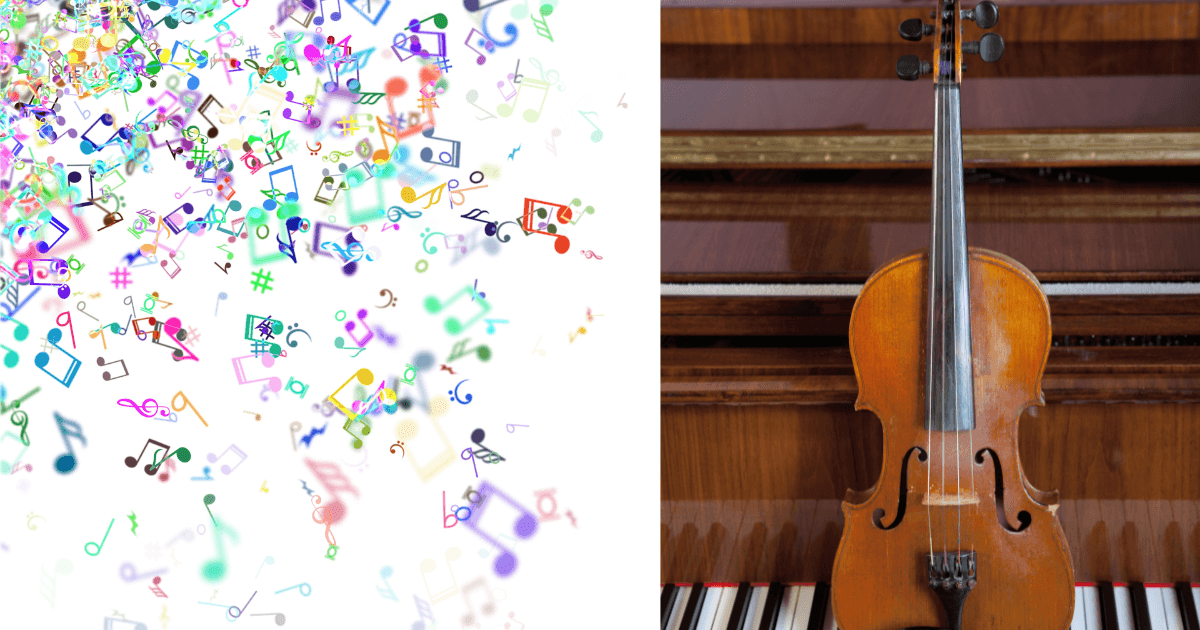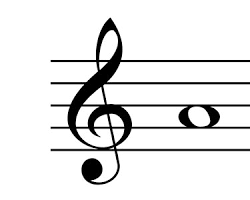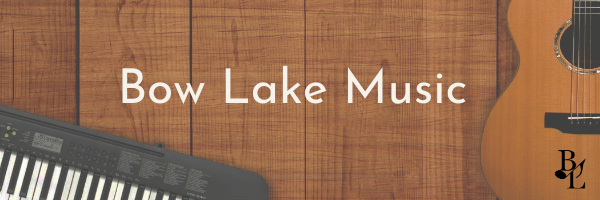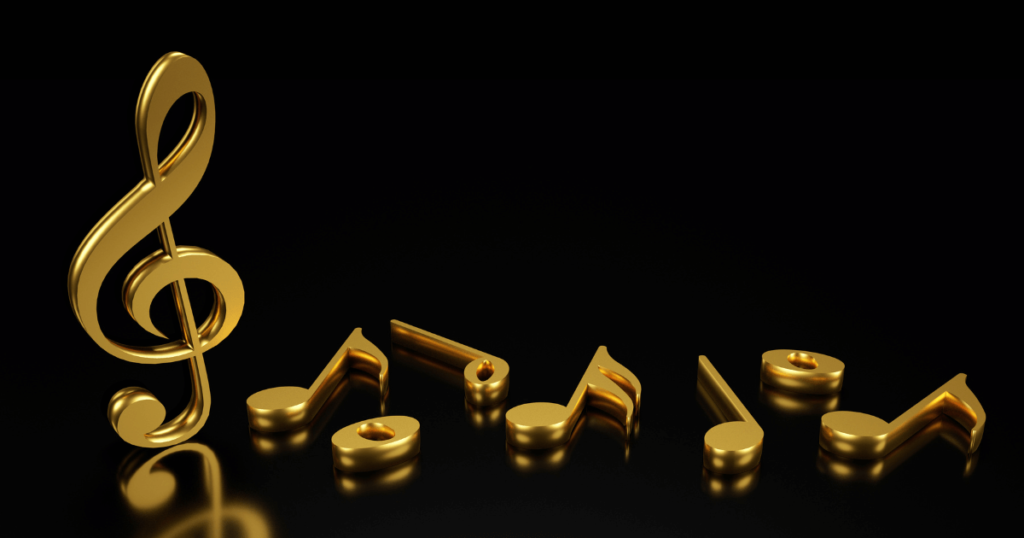Have you ever wondered what makes a song truly resonate with you? Or perhaps you dream of composing your melodies but feel unsure where to begin? The answer to both these questions lies in the fascinating world of music theory. This guide explores why Canada is the perfect place to learn music theory, unlocking the secrets behind music and empowering you to take your musical journey to the next level! Whether you’re a budding musician in Toronto or a seasoned artist in Vancouver, Canada offers a wealth of resources and a supportive community to guide you on mastering music theory. Let’s dive in
Why Learn Music Theory in Canada?

Music theory, often viewed as a complex web of notes and symbols, holds the key to unlocking a deeper understanding and appreciation for music. But why embark on this journey of learning music theory, especially in a country as musically rich as Canada? Here are some compelling reasons to consider:
Unleash Your Musical Potential
Canada boasts a vibrant music scene with diverse learning opportunities. Whether you choose online resources, esteemed music schools, or private instruction from renowned musicians, Canada provides the perfect environment to nurture your musical growth. Learning music theory equips you with the foundational knowledge to translate those melodies swirling in your head into tangible music, empowering you to compose, perform, and improvise with greater confidence.
Speak the Language of Music
Music theory acts as a universal language, enabling you to communicate effectively with other musicians. Understanding chords, scales, and musical structures allows you to collaborate seamlessly, interpret musical notations on sheet music, and even analyze your favorite pieces to glean valuable insights. Imagine jamming with fellow musicians in Canada’s bustling music hubs, effortlessly understanding their musical ideas and weaving your own voice into the tapestry of sound.
Break Through Creative Barriers
Theory isn’t just about rigid rules; it’s a springboard for creativity. By understanding the building blocks of music, you gain the freedom to experiment and push boundaries. Canada’s dynamic music scene thrives on innovation, and a strong foundation in music theory empowers you to explore new musical styles, create unique soundscapes, and leave your own mark on the Canadian music landscape.
Sharpen Your Musical Ear
Imagine being able to instantly recognize musical intervals, chords, and progressions by ear! Learning music theory hones your aural skills, allowing you to transcribe melodies you hear, improvise with greater confidence, and develop a deeper appreciation for the intricacies of music. Canada’s rich musical heritage provides a constant source of inspiration, and with a finely tuned ear, you’ll be able to fully absorb the nuances and beauty of Canadian music.
Gain a Competitive Edge
Canada is a competitive environment for aspiring musicians. A strong grasp of music theory sets you apart, demonstrating your dedication, discipline, and well-rounded musical knowledge. This can be a game-changer when auditioning for music programs, joining bands, or pursuing a career in the Canadian music industry.
By embarking on your music theory journey in Canada, you’ll not only unlock the secrets behind music but also become a part of the country’s vibrant musical community. So, why wait? Seize the opportunity to learn music theory in Canada and watch your musical aspirations take flight!
Mastering the Fundamentals: Learn Music Theory Basics
A strong foundation in music theory acts as a guiding light in your musical journey. From understanding scales and chords to deciphering complex musical structures, music theory equips you with the knowledge to communicate and interpret music effectively.
At Bowlake Music, JUST SELECT A TEACHER AND START LEARNING
Dive into Basic Music Notes

Music theory might seem intimidating at first, but fret not! Start by learning the basic building blocks of music: notes. You’ll encounter notes on a staff, which is a set of five horizontal lines where notes are positioned. Each position on the staff represents a different musical pitch. Learn to recognize basic music notes like C, D, E, F, G, A, and B, and how they are placed on the staff. Let’s embark on a practical journey to decode these symbols and empower you to read and understand basic music notation.
Your Staff: The Foundation for Notes
Imagine a musical playground – a set of five horizontal lines called a staff. Each line and the spaces between them represent different musical pitches. The higher you go on the staff, the higher the pitch of the note.
Meet the Note Crew: C, D, E, F, G, A, and B
Now, let’s get acquainted with our musical characters: the notes! We have seven basic notes, cleverly named C, D, E, F, G, A, and B. These notes can be placed on the lines or in the spaces of the staff.
Instead of using mnemonics, let’s visualize the notes on the staff itself:
Imagine the treble clef at the beginning of the staff as a friendly guide. It tells us that the middle line of the staff is home to the note G. Now, let’s place all seven notes on the staff:
- Lines: Starting from the bottom line and moving upwards, we have the notes E, G, B, D, and F.
- Spaces: Moving upwards between the lines, we have the notes F, A, C, and E.
By referring to this labeled staff image, you can solidify the position of each note (C, D, E, F, G, A, and B) on the lines and spaces. This will help you move beyond memorization tricks and develop a strong visual understanding of basic music notation.
Here’s a handy trick to memorize the order of the notes on the lines: Every Good Boy Deserves Fudge (EGBDF).
At Bowlake Music, JUST SELECT A TEACHER AND START LEARNING
Placing Notes on the Staff: Treble Clef Time!

To specify the exact pitch of a note, we use clefs. For now, let’s focus on the treble clef, which often resembles a fancy curly brace at the beginning of the staff. The treble clef clef claims the middle line of the staff as its own – that’s where the note G lives!
- Notes placed on lines above the G clef get progressively higher in pitch.
- Notes placed in the spaces below the G clef get progressively lower in pitch.
Ready, Set, Read!
Now that you’ve met the note crew and their staff playground, it’s time for some practice! Here are some activities to solidify your understanding:
-
Note Name Bingo: Find a blank staff and write different note names (C, D, E, etc.) on small pieces of paper. Draw them one by one and see who can be the first to identify the note and place it on the correct line or space on the staff.
-
Musical Memory: Play a simple melody on an instrument like a piano or online keyboard. Try writing down the notes you hear on a staff using what you’ve learned.
-
Coloring Notes: Download or print a staff with blank notes. Assign each note a different color and color them accordingly!
Remember, consistency is key. By regularly practicing these exercises, you’ll be reading basic music notes like a pro in no time!
At Bowlake Music, JUST SELECT A TEACHER AND START LEARNING
Beyond the Notes: Learn Music Composition
Compose your symphonies and craft musical tales by delving into the art of music composition. Canada’s rich musical heritage and thriving music community provide an ideal environment to hone your composition skills. Learn music composition to embrace the nuances of melody, harmony, and rhythm as you bring your musical ideas to life.
How to Learn Music Theory on Your Own in Canada

Canada’s rich musical landscape extends to the world of music theory, offering a wealth of resources for independent learners. Whether you crave the in-depth explanations of a textbook or the interactive elements of an app, there’s a path to mastering music theory that perfectly suits your learning style. Here’s a breakdown of some effective options to consider:
Embrace Free Online Resources
The internet is a treasure trove of free music theory resources. Websites like https://musictheory.net/ and https://www.teoria.com/en/tutorials/ offer interactive lessons, comprehensive explanations, and ear training exercises to solidify your grasp of musical concepts. Explore these websites at your own pace, revisiting topics as needed.
Dive into Instructional Videos
YouTube provides a vast library of free video tutorials on music theory, catering to all skill levels and learning styles.
Harness the Power of Apps
Consider incorporating music theory apps like Functional Ear Trainer, Music Theory Pro, Simply Music, or Teoria into your learning journey.
Invest in Music Theory Books
For those who prefer a structured learning approach, there are excellent music theory books available. Explore introductory books that cover the fundamentals of notation, scales, chords, and basic music structures.
Consider Online Courses
If you crave a more structured learning environment, several online platforms offer comprehensive music theory courses. These courses often provide video lectures, downloadable materials, quizzes, and sometimes even opportunities for feedback from instructors. This structured approach can be particularly beneficial for those who thrive with deadlines and a set curriculum. At Bowlake Music, Embark on Your Musical Voyage with Us
Explore Local Music Schools (for occasional guidance)

While embarking on a self-directed learning path, consider occasional guidance from a music school. Many schools offer introductory music theory courses or private lessons with experienced musicians. These sessions can provide valuable insights, address specific questions you might have, and keep you motivated on your musical journey. At Bowlake Music, JUST SELECT A TEACHER AND START LEARNING
Remember, the key to successful independent learning is consistency and a genuine passion for music theory. Don’t be afraid to experiment with different resources, find what works best for you, and most importantly, have fun as you unlock the secrets of music!
Learning an Instrument: The Heartbeat of Playing Music
The foundation of any musical journey lies in mastering an instrument. Whether it’s the grand piano, the soulful violin, the dynamic drums, or any other instrument that resonates with you, Canada provides an array of music schools and academies to receive expert training. Learning an instrument not only enhances your musical proficiency but also nurtures discipline, creativity, and self-expression.
Develop Your Voice: Learn Vocal Techniques
For those gifted with the power of their voice, vocal training is the key to unlock its full potential. Canada boasts exceptional vocal coaches and singing classes that cater to various styles and genres. From classical opera to contemporary pop, learn vocal techniques to refine your technique, expand your range, and mesmerize audiences with your vocal prowess.
At Bowlake Music, JUST SELECT A TEACHER AND START LEARNING
Learn Music Theory Apps: A Pocket-Sized Music Guide
In today’s tech-driven world, there’s an app for practically everything, and learning music theory is no exception! Music theory apps offer a convenient and engaging way to grasp the fundamentals of music, whether you’re a complete beginner or looking to brush up on your knowledge.
Here’s how music theory apps can be a valuable tool in your musical journey
Accessibility, Interactive Learning, Visual Aids, Personalized Learning and Affordability.
Here are some popular music theory apps to consider:
- Functional Ear Trainer: This app focuses on ear training, helping you develop the ability to recognize intervals, chords, and melodies by ear.
- Music Theory Pro: This app offers a comprehensive curriculum covering various music theory concepts, from basic notation to advanced topics like harmony and counterpoint.
- Simply Music: This app uses a game-based approach to teach music theory, making learning fun and engaging, especially for children or beginners.
- Teoria: This app offers interactive lessons, ear training exercises, and a built-in dictionary of musical terms, making it a well-rounded resource for music theory learners.
Remember: While music theory apps are a fantastic resource, they shouldn’t replace other forms of musical learning. Consider using them alongside music lessons, playing an instrument, or practicing with other musicians for a well-rounded musical education.
Final Notes
Music theory isn’t just about memorizing notes; it’s the key to unlocking a deeper understanding and appreciation for music. From composing your own melodies to collaborating with other musicians, Canada’s vibrant musical scene offers the perfect environment to embark on your music theory journey. So, take the first step, embrace the challenge, and watch your musical aspirations take flight!
Learn Music Theory – FAQs
Q: Can a beginner learn music theory?
Absolutely! Canada offers beginner-friendly resources like online tutorials and introductory courses.
Q: What are the benefits of learning music theory in Canada?
Music theory empowers you to:
- Communicate effectively with other musicians.
- Unleash your creative potential and explore new musical styles.
- Gain a competitive edge in Canada’s thriving music scene.
Q: How long does it take to learn music theory?
It’s a continuous learning journey. Consistent practice is key! Dedicate time to studying music theory concepts, gradually increasing the complexity as you progress.
Q: Is it essential to learn music theory to become a successful musician?
A: While it’s not mandatory, a strong grasp of music theory can significantly enhance your musical understanding and communication with other musicians.
Related Posts
Musical Mastery at Bowlake Institute: Your Journey Begins Here
Melodic Structure 101: Beginner’s Guide to Understanding Melody
Discover the Ideal Age to Learn Piano and Musical Instruments

